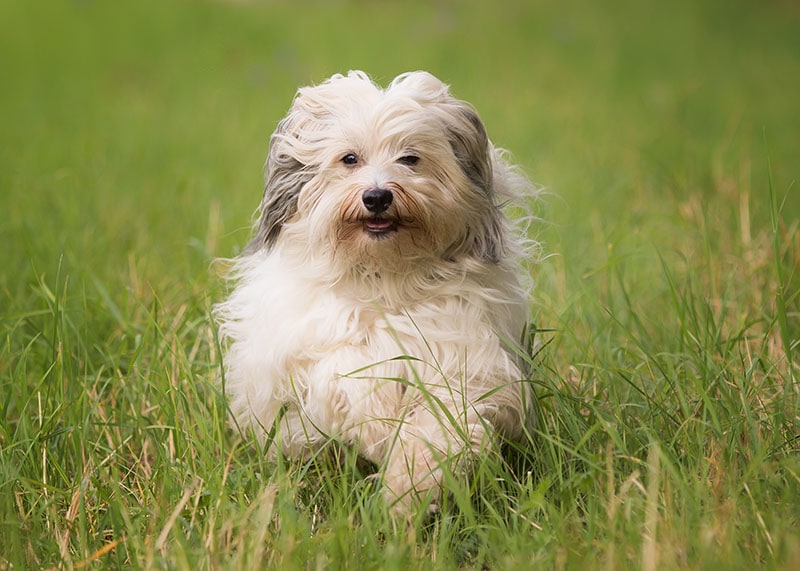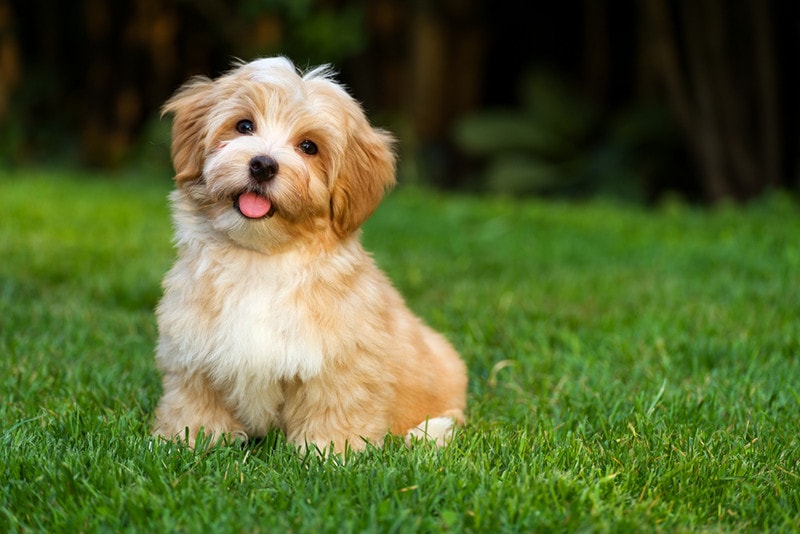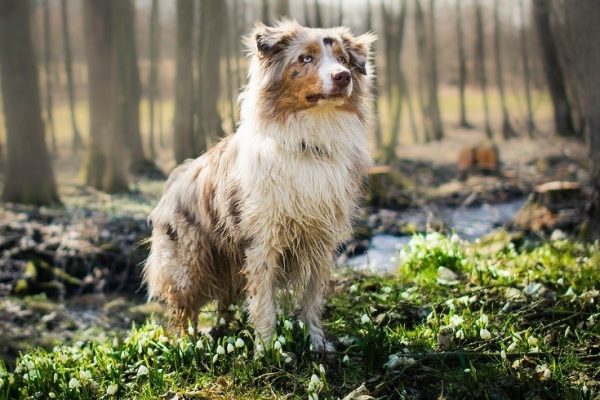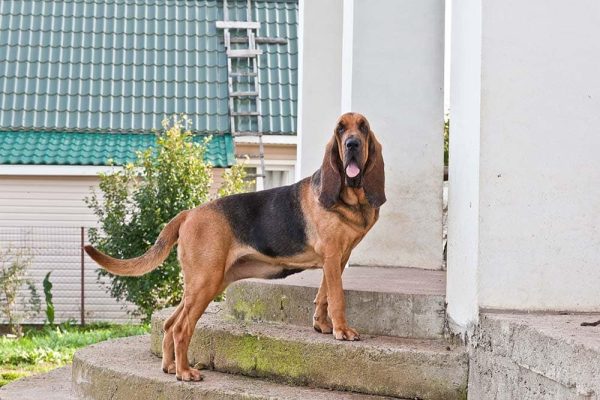How big a puppy grows is quite a necessary consideration when adding certain breeds to your household, including a toy dog like the Havanese.
A favorite for aristocrats, the Havanese is also known as the Spanish Silk Poodle or Havana Silk Dog. These dogs are characterized by small stature, light weight, fluffy coats, brown eyes, and a spring in their step. They are native to Cuba and aptly named after the country’s capital but have recently become popular with pet parents in the US.
On average, Havanese dogs grow between 7 and 13 pounds in weight and stand at a height of about 8 to 12 inches. If you have recently become a Havanese pet parent, continue reading to see the Havanese’s growth and weight charts and to know when your dog will stop growing.

Top 4 Facts About the Havanese
During the Cuban revolution, some migrants carried their dogs to the US, essentially creating the Havanese breed’s foundation stock.1 The dog’s ancestors were probably Maltese and Bichon Frise hounds that evolved into distinct canine types and are the only native breed from Cuba.
Well-loved by many pet parents, Havanese dogs come in various colors, and they make excellent companions. Some interesting facts about this breed include:
1. They Possess Numerous Names
Havanese dogs are part of the Bichon breed, and they go by several names, including Bichon Havanais, Cuban Bichon, Havanezer, Bichón Havanése, Bichon Habanero, and Havaneser.
2. They are Cuba’s National Dog Breed
While the origin of the Bichon and Maltese breeds is believed to be the Tenerife Island of Spain, the Havanese dog traveled to Cuba by boat and became popular. Today, the breed is Cuba’s only native breed and the country’s national canine.2
3. The Havanese Breed Almost Went Extinct
Havanese dogs almost came close to extinction during the Cuban revolution had it not been for the migrants who fled to the US taking the dogs with them. The total population of this breed in the 70s amounted to only 11 dogs, but it’s been built back to make them one of the top 25 most popular breeds.
4. Havanese Require Constant Human Interaction
The Havanese breed needs the attention of their owners constantly, partly due to their affectionate and highly social personalities. Sometimes referred to as Velcro dogs, they stick as close to their pet parents as possible and can easily suffer separation anxiety.


Havanese Size and Growth Chart
| Age | Weight Range | Length Range |
| 8 weeks | 1.4 to 4.5 pounds | 5 to 7 inches |
| 4 months | 3.5 to 8.5 pounds | 8 to 10.5 inches |
| 6 months | 6.5 to 10 pounds | 8.5 to 11 inches |
| 8 months | 7 to 12.5 pounds | 9 to 12.5 inches |
| 12 months | 8.5 to 13 pounds | 10.5 to 13 inches |
| 14 months | 9 to 13.5 pounds | 11 to 13.5 inches |
The male Havanese will weigh slightly heavier than the female at between 8 and 13.5 pounds, while its counterpart tips the scale from 7 to 12.5 pounds. Height also varies, with males measuring 11.5 inches as opposed to females’ 10.5 inches. That’s because this is a medium-length canine that’s classified by the AKC as a toy dog.
The first year of a Havanese dog’s life is marked with rapid weight and height gain, but after that, the breed maintains a steady stature. You can achieve the right growth path for your pup growing outside the normal range with changes in diet and exercise as recommended by your vet.
When Does a Havanese Stop Growing?
A Havanese reaches full length or height at around 6 to 8 months but may continue gaining weight and filling out until 18 months or older. That’s in contrast to other dog breeds that take up to 2 years to reach their full maturity size, with various factors playing a role in when they stop growing.
A fully grown Havanese stands at a height of 8.5 to 11.5 inches tall, but this can also extend to 13.5 inches. At 14 months old, you can expect your pup to weigh between eight and 13.5 pounds, or thereabouts depending on factors that we shall discuss in the next section. After this age, a Havanese will stop growing but may increase in weight especially as they grow older and exercise less.
Regardless of when a Havanese’s growth stops, the breed is characterized by playfulness and remains a loving companion for a long time.

Factors Affecting the Size of Havanese Dogs
Genetics and nutrition are the two major players affecting the size of these dogs. Genetics, or the dog’s bloodline, has the most significant effect on the overall size of your Havanese, while diet takes a close second.
Puppies born to larger parents are typically sizable compared to those born to smaller ones. Similarly, nutrition is also essential in determining the full-grown weight and size of a Havanese dog, whether being stunted by malnutrition or being fat and weighty from overeating.
A balanced diet from a young age ensures that your pup reaches and maintains the appropriate height and correct weight at each stage of development. In that aspect, exercise also plays a crucial role in helping your Havanese pet maintain a healthy weight while keeping their bones strong and muscles toned.
Ideal Diet for Maintaining a Havanese’s Healthy Weight
Meeting the nutritional needs of your Havanese will help them maintain a healthy weight and size, which is possible with a balanced diet. That includes limited, raw, and non-fermented carbohydrates, fats, and high-quality proteins, along with minerals and vitamins.
Havanese dogs are known for stacking on the pounds, and a healthy diet should consist of biologically appropriate vegetables, ground bones, and healthy fats. Pay attention to your pup’s weight and any change in physical appearance.
- Your pet’s metabolism
- The food’s quality
- How much exercise your Havanese gets
- Their weight, whether you want them to lose or gain weight
- Their age
An experienced veterinarian is a great person to reach to when you need advice on the best diet for your Havanese.
If you need to speak with a vet but can't get to one, head over to PangoVet. It's our online service where you can talk to a vet online and get the personalized advice you need for your pet — all at an affordable price!

How to Measure Your Havanese
If you’re looking to find the exact weight and height measurements for your Havanese, you’ll need a weighing scale and tape measure. For height, have them in a standing position against the wall and take measurements from the shoulders to the floor. Length is measured from the base of the neck to where the tail begins.
You can get an accurate measurement of your Havanese’s weight using a bathroom scale. Weigh yourself, record that, and then take your pet in your arms and weigh yourself again. Subtract this weight from the previous readings for an accurate estimate.
For a dog that lives up to 15 years, you must keep them within a healthy weight range. Have them weighed and measured at every vet visit to keep everything in check.

Conclusion
The Havanese is an excellent dog when looking for a pet of small stature but with high intelligence. The AKC classifies them as a toy breed of dog, and as such, they attain adult weight and height quicker than other larger breeds. By 3 months after birth, your pet will have attained half its adult size and should be tipping the scales by average parameters.
Your pup is considered an adult after the age of 12 months and will have attained as much weight and height as this breed allows. With the right diet, exercise, vet visits, and nurturing environment, your Havanese can grow to a weight of 13.5 pounds and a height of 13 inches.
See also:
- How Big Is a Havapoo When Fully Grown (Size & Weight Chart)
- Teacup Havanese: Pictures, Care Guide, Temperament & Traits
Featured Image Credit: Dorottya Mathe, Shutterstock



















